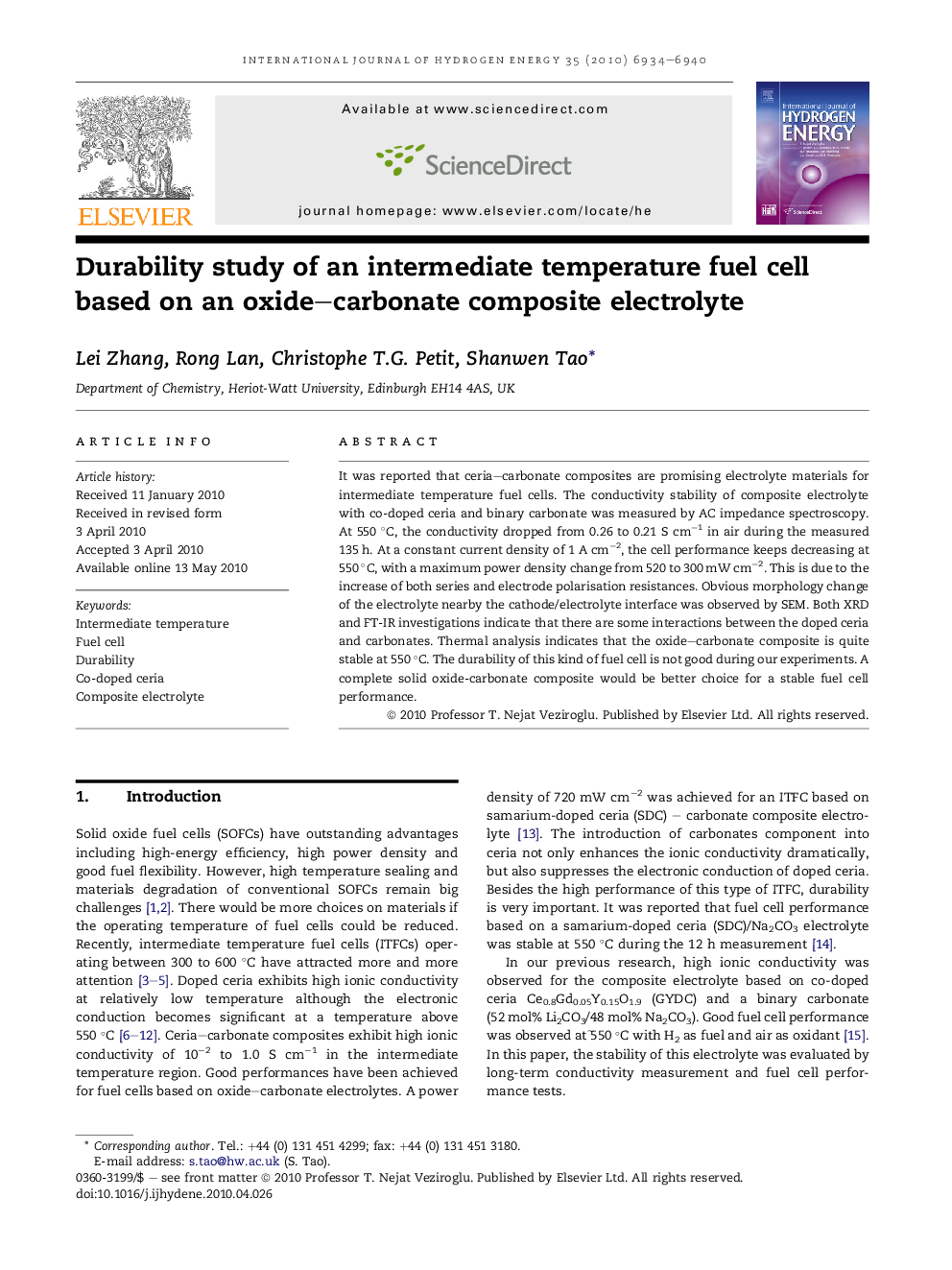| کد مقاله | کد نشریه | سال انتشار | مقاله انگلیسی | نسخه تمام متن |
|---|---|---|---|---|
| 1272931 | 1497604 | 2010 | 7 صفحه PDF | دانلود رایگان |

It was reported that ceria–carbonate composites are promising electrolyte materials for intermediate temperature fuel cells. The conductivity stability of composite electrolyte with co-doped ceria and binary carbonate was measured by AC impedance spectroscopy. At 550 °C, the conductivity dropped from 0.26 to 0.21 S cm−1 in air during the measured 135 h. At a constant current density of 1 A cm−2, the cell performance keeps decreasing at 550 °C, with a maximum power density change from 520 to 300 mW cm−2. This is due to the increase of both series and electrode polarisation resistances. Obvious morphology change of the electrolyte nearby the cathode/electrolyte interface was observed by SEM. Both XRD and FT-IR investigations indicate that there are some interactions between the doped ceria and carbonates. Thermal analysis indicates that the oxide–carbonate composite is quite stable at 550 °C. The durability of this kind of fuel cell is not good during our experiments. A complete solid oxide-carbonate composite would be better choice for a stable fuel cell performance.
Journal: International Journal of Hydrogen Energy - Volume 35, Issue 13, July 2010, Pages 6934–6940